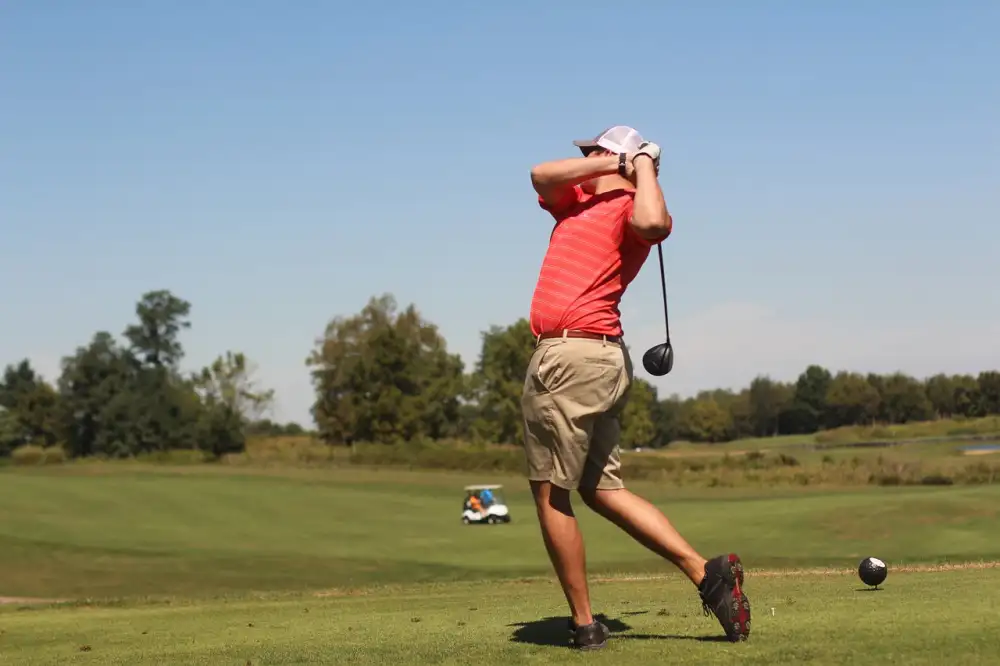Unveiling the Power: Discover the Key Muscles Engaged in a Golf Swing for Optimal Health

- Core Muscles: Exploring the role of the abdominal and back muscles in generating power and stability
- Upper Body Muscles: Discussing the contribution of the shoulders, chest, and arms in achieving an effective swing
- Lower Body Muscles: Highlighting the significance of the legs, hips, and glutes in generating power and maintaining balance
- Rotational Muscles: Explaining the involvement of the obliques and spinal muscles in generating rotational force
- Flexibility and Mobility: Emphasizing the role of flexibility and mobility in optimizing muscle engagement during a golf swing
- Training and Conditioning: Providing tips on specific exercises and training techniques to strengthen the muscles used in a golf swing
- Injury Prevention: Offering insights on how to prevent common muscle injuries associated with golf swings
When it comes to achieving optimal health and performance in golf, understanding the role of muscle engagement is crucial. A golf swing requires a coordinated effort from various muscles throughout the body, working together to generate power, stability, and precision. By uncovering the key muscles involved in a golf swing, we can unlock the secrets to improving our game and enhancing our overall well-being. So let's delve into this fascinating world of muscle engagement in a golf swing and discover how it can transform our experience on the green.
Core Muscles: Exploring the role of the abdominal and back muscles in generating power and stability
The core muscles play a crucial role in generating power and stability during a golf swing. The abdominal muscles, including the rectus abdominis and obliques, provide the foundation for rotational force. They help transfer energy from the lower body to the upper body, allowing for a powerful and controlled swing. Additionally, the back muscles, such as the erector spinae and latissimus dorsi, provide stability and support throughout the swing. Strengthening these core muscles through exercises like planks and Russian twists can greatly enhance your golf performance.
Upper Body Muscles: Discussing the contribution of the shoulders, chest, and arms in achieving an effective swing
The shoulders, chest, and arms play a crucial role in achieving an effective golf swing. The shoulders are responsible for initiating the swing and generating power. They provide stability and control throughout the entire motion. The chest muscles, particularly the pectoralis major, help to stabilize the upper body and maintain proper posture during the swing. The arms, including the biceps and triceps, contribute to the speed and accuracy of the clubhead through their involvement in the backswing and follow-through. Strengthening these upper body muscles is essential for maximizing distance and control in your golf swing.
Lower Body Muscles: Highlighting the significance of the legs, hips, and glutes in generating power and maintaining balance
The lower body muscles play a crucial role in generating power and maintaining balance during a golf swing. The legs provide a solid foundation, transferring energy from the ground up through the body. The hips generate rotational force, allowing for an efficient transfer of power from the core to the upper body. The glutes, being the largest muscle group in the body, contribute to both power generation and stability. Strengthening and conditioning these muscles can greatly enhance your golf swing and overall performance on the course.
Rotational Muscles: Explaining the involvement of the obliques and spinal muscles in generating rotational force
The rotational muscles play a crucial role in generating the powerful and fluid motion required for an effective golf swing. The obliques, located on the sides of the abdomen, are responsible for initiating and maintaining rotation throughout the swing. These muscles work in conjunction with the spinal muscles, which include the erector spinae and multifidus, to generate rotational force and maintain stability. Strengthening and conditioning these muscles through targeted exercises can greatly enhance a golfer's ability to generate power and maintain proper form throughout their swing.
Flexibility and Mobility: Emphasizing the role of flexibility and mobility in optimizing muscle engagement during a golf swing
Flexibility and mobility play a crucial role in optimizing muscle engagement during a golf swing. A golfer with good flexibility can achieve a full range of motion, allowing for a more powerful and efficient swing. Tight muscles can restrict movement and hinder performance. Incorporating stretching exercises into your routine can increase flexibility, particularly in the shoulders, hips, and spine. Additionally, improving mobility through exercises such as yoga or Pilates can enhance stability and balance during the swing. Prioritizing flexibility and mobility will not only improve your golf game but also prevent injuries and promote overall health.
Training and Conditioning: Providing tips on specific exercises and training techniques to strengthen the muscles used in a golf swing
Training and conditioning play a crucial role in strengthening the muscles used in a golf swing. To optimize your performance, focus on exercises that target the core, upper body, lower body, and rotational muscles. Engage in exercises such as planks, Russian twists, and medicine ball throws to strengthen your core. For the upper body, incorporate exercises like shoulder presses, chest flies, and bicep curls. Don't neglect your lower body; squats, lunges, and hip bridges are excellent for building leg and glute strength. Lastly, include exercises that promote rotational power such as wood chops and cable twists. Remember to consult with a fitness professional to ensure proper form and technique while performing these exercises.
Injury Prevention: Offering insights on how to prevent common muscle injuries associated with golf swings
Injury Prevention: To prevent common muscle injuries associated with golf swings, it is crucial to prioritize warm-up exercises before playing. Dynamic stretches and gentle swings can help prepare the muscles for the intense movements involved in a swing. Additionally, maintaining proper form and technique throughout the swing can reduce the risk of strain or sprain. Regular strength training and conditioning exercises targeting the specific muscles used in a golf swing can also help prevent injuries by improving muscle endurance and stability. Lastly, listening to your body and taking breaks when necessary can prevent overuse injuries and promote overall muscle health.
In conclusion, understanding and training the muscles involved in a golf swing is crucial for both improved performance and overall health. Engaging the core muscles, upper body muscles, lower body muscles, and rotational muscles not only generates power but also enhances stability, balance, and rotational force. Additionally, maintaining flexibility and mobility plays a vital role in optimizing muscle engagement during a swing. By incorporating specific exercises and training techniques, golfers can strengthen these key muscles and prevent common injuries associated with golf swings. So, embrace the power of muscle engagement to unlock your full potential on the golf course while promoting optimal health.
Published: 20. 01. 2024
Category: Health



